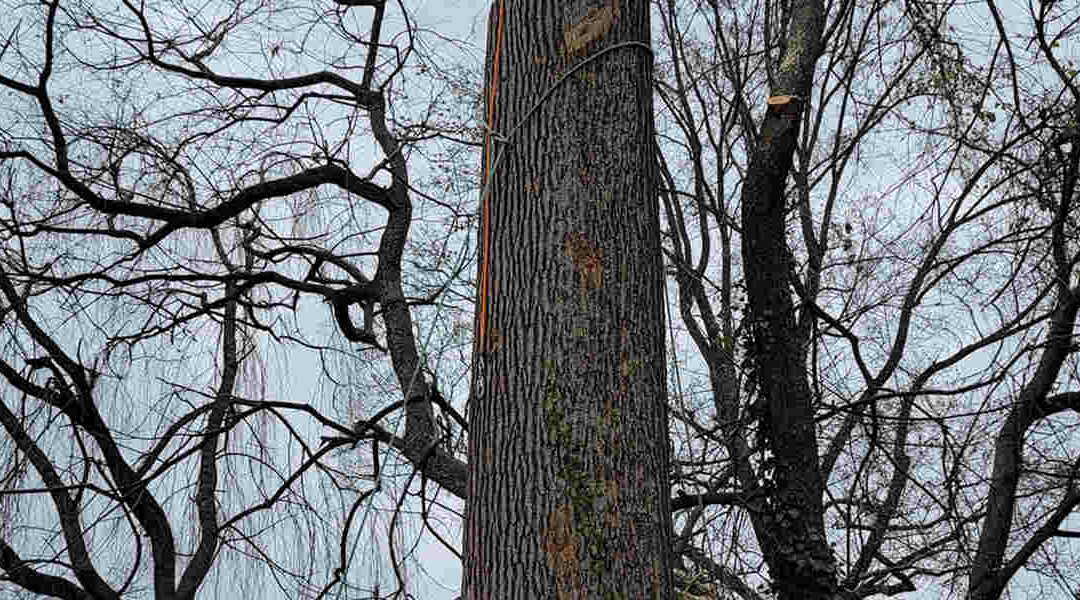What is a dormant tree? Every gardening enthusiast has posed this question at least once, especially if their backyard centerpiece doesn’t burst with life when the seasons change.
As the go-to tree service in Brandywine, our crew at Hernandez Complete Tree Service LLC can help you unravel this arboreal mystery. Keep reading as we break down the nitty-gritty details, from the fundamental concept of dormancy to differentiating between a dormant tree and a dead one.
What Triggers Dormancy?
At its core, dormancy is Mother Nature’s remarkable survival strategy — a sort of hibernation for flora. When the winter chill sets in and the days grow shorter, trees slow down their growth and metabolic activity.
This hiatus allows them to conserve energy and protect themselves from frosty temperatures. It’s akin to us snuggling up under a cozy blanket with hot cocoa in hand, weathering out a winter storm.
Come spring, trees will gradually wake up from their slumber, kickstart their metabolic processes, and gear up for a new season of growth. Some varieties, like the red maple or the Eastern redbud, are the early birds of the plant kingdom, bursting into full bloom at the first hint of warmer weather. Others, like the ginkgo, might hit the snooze button and wake up a touch later.
Symptoms of Dormancy
What is a dormant tree but a sleeping giant, patiently waiting for the right moment to unfurl its beauty? Common signs of a plant entering this state include:
- Rapidly changing leaf colors
- Bare branches
- Lack of growth
- Hardened protective tissues at the tip of shoots
These symptoms mostly manifest in deciduous trees. Conifers have a special way of dealing with dormancy. Their needles have a hardy, waxy coat, allowing most of them to hold onto their green color throughout the winter.
Dormant vs. Dead
Does one of your specimens remain barren when others in your neighborhood have already leafed out? Before you jump to conclusions and consider it a goner, first ensure it’s not just taking a longer nap.
The Scratch Test
Carefully scrape a small section of bark from a branch with your fingernail or a knife. If you find green, moist flesh underneath, that’s a good sign.
A brown, brittle interior means that part of the tree is dead. Trim that part and try the test again in a few more areas. When you keep getting the same results, reach out to a professional arborist to assess the situation.
Bud Inspection
Even dormant trees will have buds waiting in the wings, ready to spring into action under the right conditions. These buds are often small, with tough coverings that protect the delicate insides from the harsh winter. Pluck one and gently open it; if you find a green or white interior, it’s a good sign.
Leaf Drop Behavior
A healthy, dormant tree typically sheds its foliage in a uniform pattern, almost like it’s performing an orchestrated leaf-fall ballet. If the leaves seem to cling on for dear life or keep dropping erratically, it might signify a deeper issue.
Flexibility Assessment
Finally, try a flexibility test. Bend a small branch; if it snaps without much resistance, it’s likely dead.
A supple, springy limb indicates life. Keep in mind that trees have different resilience levels depending on the species, so don’t expect uniform flexibility across the board.
Consult a Certified Arborist
Do you still feel stumped? Now is a good time to call in the experts. At Hernandez Complete Tree Service LLC, we can answer, “What is a dormant tree?” and help diagnose your specimen’s specific condition.
Dial 240-299-4639 today, or further explore our blog to discover varieties of vines that choke out trees.


